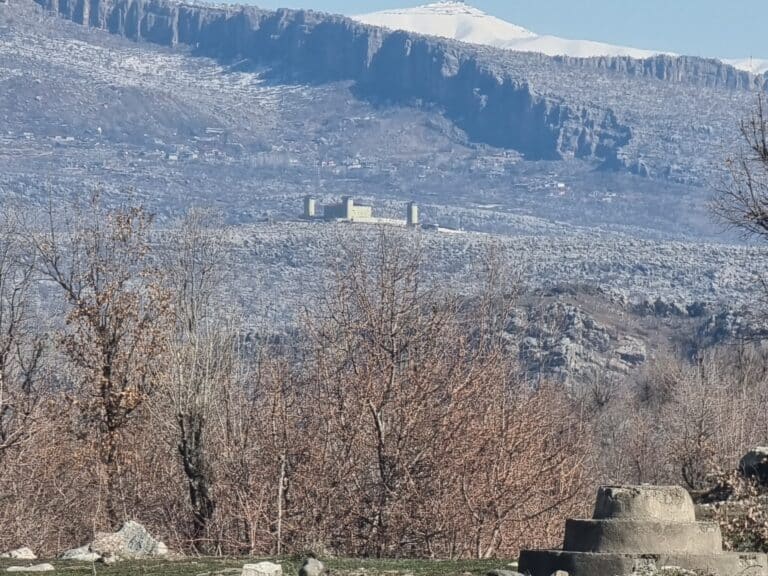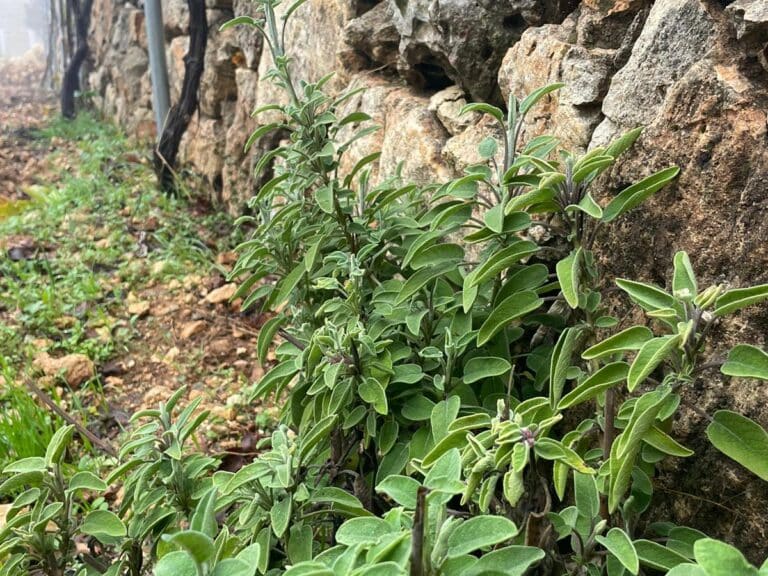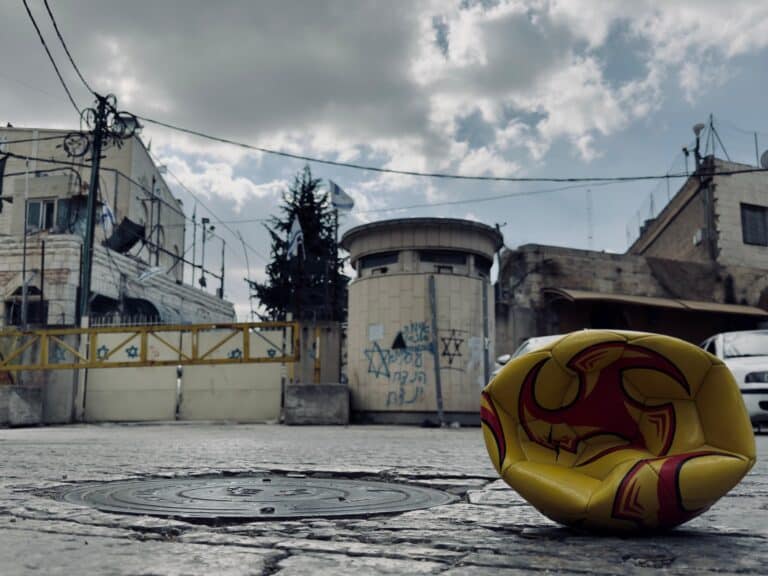In the early days of Christian Peacemaker Teams, we began searching for a simple phrase that could represent our experiment in faith-based, nonviolent peacemaking. It took awhile, but eventually the result of our quest became clear. The answer was simple, engaging and connected to a long religious and spiritual history. And it grew directly from our experience – “Getting in the Way.”
The year was 1995. The place was Hebron in the Palestinian West Bank. A major massacre of Palestinians had occurred there, at a site important to Jews, Muslims and Christians where Abraham and Sarah are entombed. In response to the mayor’s invitation and the advice of local people, CPT placed a team there. All of us were finding our way, testing methods to act and to reduce violence.
We knew that Israeli settlers regularly threatened Palestinian school children so we began to look for ways to provide a protective presence with them. One day, CPTers, Wendy Lehman and Dianne Roe went out to accompany children at the Cordoba Elementary School. As Roe stood talking to some teenage girls, several settlers pushed her to the ground and kicked her. Settler youth also attacked the students, dragging them by their hair.
A week later, Roe was reporting back to her home church when a women in her congregation asked, “Why didn’t you just get out of the way so you wouldn’t be hurt?” That option had not occurred to Roe because, in the work of violence reduction, you don’t just get out of the way whenever there is a threat to your personal safety.
Some time later, Roe was invited to create a banner for an international conference organized by Sabeel, a Palestinian Christian group seeking a just peace for the region. The conference organizers wanted to incorporate the notion of the “Way,” an early name for followers of Jesus (Acts 9:2).
Roe’s banner featured feet in worn sandals. She used a photograph of Lehman’s feet as a model. The feet of CPTer Sister Anne Montgomery also contributed to the final banner. The phrase, “Getting in the Way,” was superimposed on the feet.
The word “Way” to describe the early Christian movement appears frequently in the New Testament and is also part of the grounding of other world religions. In Islam, Sharia law hints at the notion of a “Way.” Buddhism speaks of the “Middle Way,” a path of moderation between the extremes of asceticism and sensual indulgence.
The basic language of the “Way” reaches to the foundational threads of Christianity, to the stories of Jesus himself and his immediate followers who combined words, healing, confrontation, public discourse, suffering and possible death at the village and urban level, and at the personal and political level – all as an inherent part of the journey. It seemed an appropriate place from which to launch a project of violence reduction. Our friends at Sabeel agreed to let us use the banner and the signature phrase for our work.
“Getting in the Way” implies that there is a way. It is a way that requires healthy feet and clear convictions nurtured in the spirit. It leads through villages and cities, across oceans, mountains and rivers.
The spirit of the “Way” incorporates a persistence that is not seduced by the twin diversions of compulsive activism or unengaged living. It suggests that people of the “Way” will not easily veer off course or turn backward, tempted by power, wealth, or security.
“Getting in the Way” indicates a quality of collective work and decision making that retains flexibility; an individuality that is not bound by short term ego needs. People in the “Way” practice long-term militancy armed with a special literacy to read the signs of the times and ability to develop careful, creative strategies for engagement.
People of the “Way” are not looking to be saved by the power of the nation state and its military. They are connected, body, mind and soul, with the power of God throughout the whole universe. As Lehman put it after those settler attacks in Hebron, “I’ve certainly learned a lot about the power of prayer and its interconnectedness with action. Our work involves risk, and we sometimes put ourselves in situations where we have only our faith in God, the power of nonviolence, each other and our hosts to keep us safe. Without the prayer support of our friends back home, I’m not sure we could do it.”
This “Way” has unexpected opportunities for transformation, surprise and miracles as well as impediments and obstacles. Whether the message is joyful or ominous we invoke the power of God in celebration.



